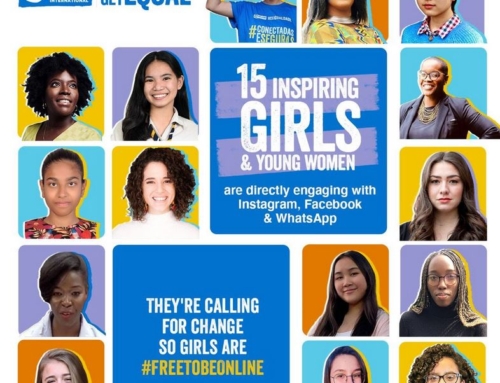A few months ago, virtual events were adopted as a means to minimize costs while reaching large numbers of participants and these provided a great way to host large-scale events digitally. In times like these of #Covid19, with thousands of events being canceled, we need to be at the forefront with virtual events to make sure our long-term work can continue happening.

Our first virtual event focused on introducing participants to virtual events and we explored options and tips for carrying out successful virtual events that are all explored in this blog. We kicked off the WhatsApp workshop with introductions and dived into the basics and explored what a “virtual event” really is.
What are Virtual Events?
A virtual event is one where an individual attends a session online rather than in-person. Virtual events could be online conferences, webinars, exercise sessions, cooking lessons, Yoga, and Dance Parties using any of the very many available conferencing tools or social platforms. Virtual events can be equally effective as In-Person events, the only difference is that there is no physical venue/audience in the former. However, it’s important to note that they may both require the same efforts to make them happen, though costs for virtual events are considerably lower as there are no catering, venue, or transport expenditures!
Virtual events could be online conferences, webinars, exercise sessions, cooking lessons, yoga and dance parties using any of the very many available conferencing tools or social platforms.
Next, we dived into the best tips and practices one could follow in order to conduct successful virtual events.
Before the event
Step 1: Choose an easily accessible Channel
Let your audience know which platform and format you are going to reach them with, use one that allows them to stay connected from the beginning to the end. You might be wondering where to start planning your event, with so many platforms available. We have made some quick lists to help you out! Here are 5 platforms each for smaller team meetings and for larger events like a conference.
When choosing the right platform, always go for that platform that works well for and includes all the necessary features you need. Examples of features include; chat, Q&A, live polls, the ability to upload slides or additional content and many more which can altogether transform your event.
Different platforms have their pros and cons, for example, Skype is free but allows a max number of 50 people to join. Others have poor security or might have fun features like funny backgrounds. For Google Hangouts, up to 150 people can participate in a chat, but only 25 people can participate in a video call at once.
Step 2: Choosing the right time
Similar to face to face events, one has to put a lot of effort into picking the right date and time for a virtual event, regardless of size or platform. Before proceeding to the next step of advertising your event, do a little research and ensure that there are no competing events or holidays that would interfere with the attendance.
Step 3: Advertise and market your event!
It’s important to understand your target population and use effective marketing channels. Using online tools, you can reach more people at a lower cost, than traditional advertising. You can as well show interactive guides like video tutorials on how to sign up for the event, how to make payments and how to connect to the platform. Keep in mind that there may be many concurrently occurring virtual events competing for their time, so make sure to highlight why yours is relevant.
Step 4: Register your Participants
Collect basic attendee data to plan a great event. Use platforms like Eventbrite or even a simple Google Form to keep track of how many participants might show up.
Step 5: Create Engaging Content
Virtual events rely on content, be sure to curate content that is consumable, present it in the easiest way possible and ensure its engaging
Just like when planning a physical event, you need to put in the work to draw, engage and give value to your audience. Which brings us to our next area;
During the Event
Now that we have explored the best practices for planning and organizing events, next we will dive into the best practices to follow during the virtual event. This section will look at various areas of keeping participants engaged and the various guidelines that control the way the events should be conducted;
1. Keeping Attendees Engaged
You know that moment someone is standing and presenting in front of an audience, and they look up and everyone is on their phone? Yikes. The distraction when someone is on their computer is even higher. Let’s look at how to encourage more focused attention and interaction.
We recently had a brainstorming session with the Digital Human Rights Lab and using different room links of Jitsi, were able to break out into smaller groups, and after the exercise, came back together to discuss the results. You can do a similar activity on Zoom.
2. Etiquette and Protocol for virtual events
To help you keep your virtual event productive and professional, the following guidelines need to be followed;
3. Privacy Concerns
As the event organizer, you need to understand the areas of concern in cybersecurity for your event. You should always know that breaches can happen and must put measures in place to prevent them. As an organizer, consider:
- Website Encryption, so that information submitted through your site is only readable by you.
- Only collect relevant information from participants
- Be sure to use a secure platform
For example, Jitsi Meet is free, open-source, and encrypted. However, it allows a maximum of 75 participants in a chat.
Additionally, you should also let your attendees know they too play a role in ensuring data privacy. This can be done through ensuring that they adhere to the following;
- Keeping their computer systems up to date and installing all necessary updates
- Avoiding disclosing very personal information
- Avoiding downloading any content from a person or an untrustworthy source
After the Event
When you’re done, are you really done? We’ve put together some notes on keeping the momentum going after your virtual event is done.
- Follow up on the social media chatter about the event using a hashtag and give input where necessary
- Post-event survey to understand participants experience
- Thank everyone involved both participants and speakers
- Share meeting outcomes with attendees
- Make webinars public for those that missed if the content is not sensitive
- Provide means for continued engagement and networking amongst participants
A post-event survey is one of the very important aspects after the event, as it is meant to gauge attendee satisfaction. It should be sent out preferably within 12-hours after the event. When designing such as survey, consider asking questions like:
- How effective were the different sessions?
- Did they like the content?
- Whether they have any additional feedback, be ready and happy to receive both positive and negative feedback and use it to better your events.
The key to running a successful virtual event is to start right from the beginning. Before you even start planning your event, ask yourself “Why am I hosting this event? What do I want my viewers to take away?” “Who are my attendees” and these should help you plan an event that works for you. Although virtual events will never be able to replace in-person gatherings, sometimes they are the only option.
Written by Phillip Ayazika and Neema Iyer, Pollicy





Leave A Comment